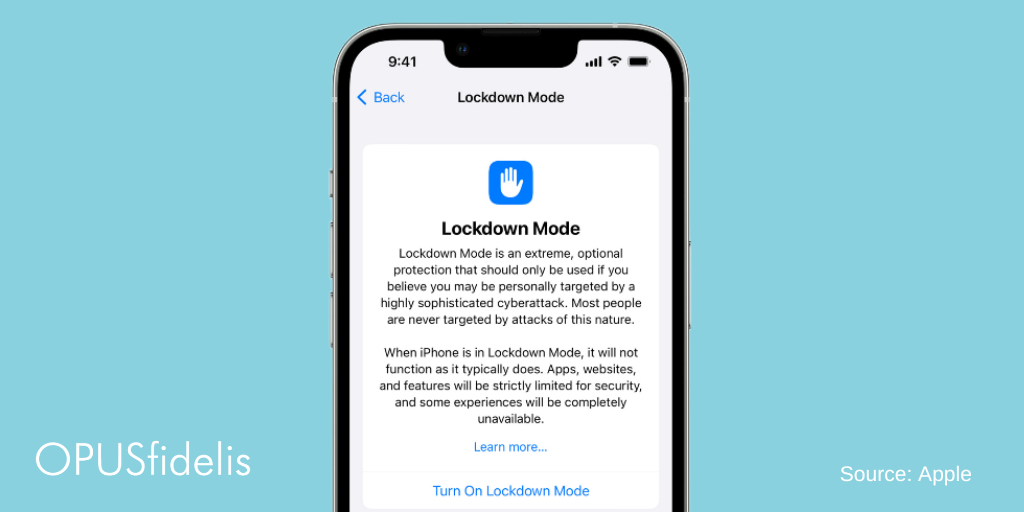Last week, Apple shared that it is releasing a new security feature to help protect users against targeted cyberattacks: Lockdown Mode.
What is Lockdown Mode?
Lockdown Mode was developed to protect a select group of users vulnerable to increasing state-sponsored spyware threats because of their unique positions, such as journalists and political activists. As the company said in a recent statement:
“Lockdown Mode is the first major capability of its kind designed to offer an extreme, optional protection for the very small number of users who face grave, targeted threats to their digital security.”
The security feature “hardens device defenses and strictly limits certain functionalities, sharply reducing the attack surface that potentially could be exploited by highly targeted mercenary spyware.”
Once it is released to the public, Lockdown Mode will enable the following measures:
• Messages: Most message attachment types other than images are blocked. Some features, like link previews, are disabled.
• Web browsing: Certain complex web technologies, like just-in-time (JIT) JavaScript compilation, are disabled unless the user excludes a trusted site from Lockdown Mode.
• Apple services: Incoming invitations and service requests, including FaceTime calls, are blocked if the user has not previously sent the initiator a call or request.
• Wired connections with a computer or accessory are blocked when iPhone is locked.
• Configuration profiles cannot be installed, and the device cannot enroll into mobile device management (MDM), while Lockdown Mode is turned on.
While Lockdown Mode is designed to help protect certain individuals, the feature will be available to all users once Apple’s iOS 16, iPadOS 16, and macOS Ventura software updates are released.


